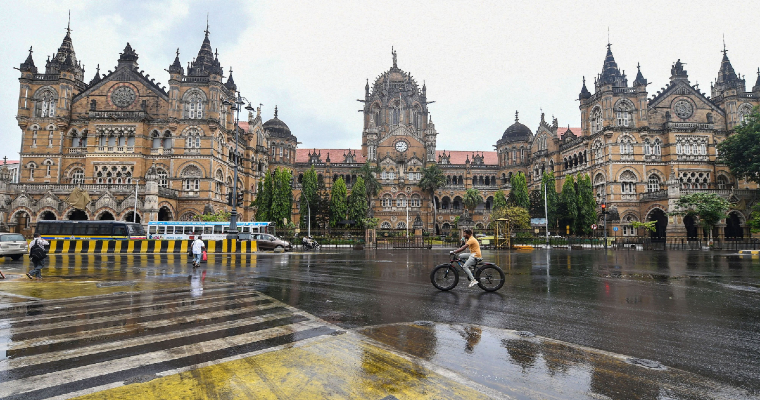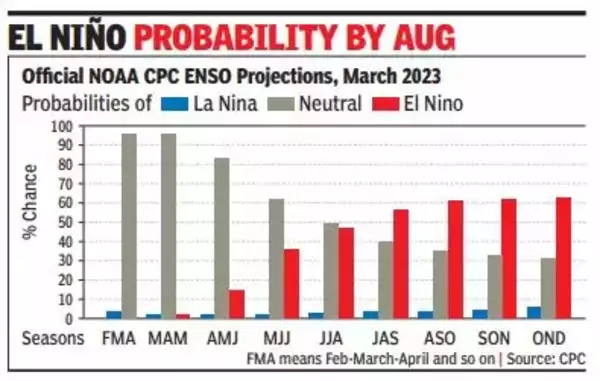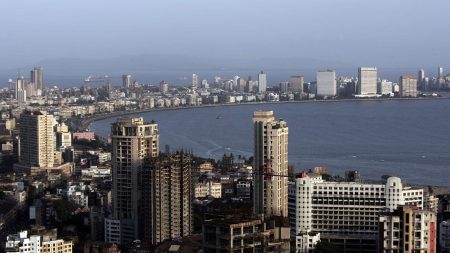The vibrant metropolis of Mumbai, known for its bustling streets and lush landscapes during the monsoon season, is experiencing an uncharacteristic dry spell this year. The Indian monsoon, a lifeline for the city’s water resources and agricultural activities, has taken an unforeseen pause, leaving experts puzzled. This extended break in the monsoon cycle is attributed to the El Nino phenomenon, coupled with the absence of vital moisture-bearing weather patterns.

Mumbai’s skyline, usually cloaked in heavy rain clouds around this time of the year, stands remarkably dry. Meteorological experts have pointed their fingers at the El Nino phenomenon, which has exerted its influence on the Indian monsoon. El Nino, a warming of the central and eastern tropical Pacific Ocean, has historically disrupted global weather patterns, including the monsoon in India. This climatic phenomenon triggers changes in atmospheric circulation, leading to subdued monsoons and reduced rainfall in the Indian subcontinent.
Adding to the complexity of the situation, the absence of low-pressure systems and moisture-bearing western disturbances has further compounded the monsoon break in Mumbai. These weather systems are pivotal in carrying moisture from the oceans to the land, causing the characteristic heavy rains that Mumbai is accustomed to during the monsoon months. This year, the dearth of such systems has resulted in a dry spell that has raised concerns among both meteorologists and the city’s residents.
Mumbai Rainfall and Deviation:

The month of August, typically a critical period for monsoon rains in Mumbai, has witnessed an unprecedented shortfall in precipitation this year. A stark comparison with historical data reveals the severity of the situation. The city’s primary weather station in Santacruz, which traditionally receives around 227mm of rainfall between August 1 and 9, has recorded a mere 21mm during the same period this year, reflecting a substantial 91% deficit. Similarly, the coastal station in Colaba has received only 17mm of rain this month, marking a significant 91% deviation from the usual 189mm was recorded over this month.
Meteorological experts are united in their prediction that this monsoon hiatus will persist well beyond August 15, possibly extending into the latter part of the month. The Southern Oscillation Index, a key indicator of the El Nino phenomenon, has shown trends over the last 30 days that suggest the strengthening of the El Nino’s ocean-atmosphere coupling. The absence of this coupling during July contributed to a more active monsoon, underlining its crucial role in shaping Mumbai’s weather patterns.
An Exceptional Monsoon Season Amidst the Pause:

Ironically, the current monsoon hiatus comes on the heels of an exceptional season in Mumbai. Between June 25 and August 10, the city received an astonishing 2,318.9mm of rainfall, surpassing the seasonal average of 2,318.8mm. This rapid accumulation of rainfall is notably 44% higher than anticipated by this time of the year, showcasing the dynamic nature of Mumbai’s monsoon patterns.
As Mumbaikars continue to await the return of the much-anticipated monsoon rains, the El Nino-driven pause offers a stark reminder of the intricate web of climatic forces that govern our environment. Meteorologists and climate scientists closely monitor the evolving patterns, acknowledging that even the most predictable phenomena can occasionally yield surprises. This dry spell is a testament to the interconnectedness of global climate systems and the need for continued research to better understand and predict these complex interactions. As Mumbai navigates through this unusual monsoon hiatus, it serves as a stark reminder of the power that nature wields over even the most bustling of urban landscapes.













